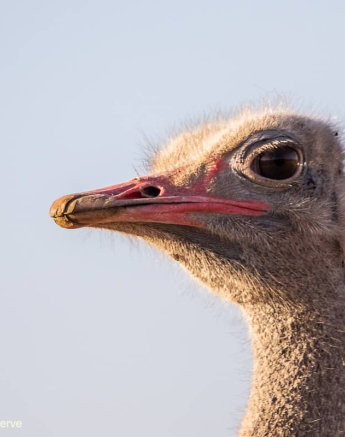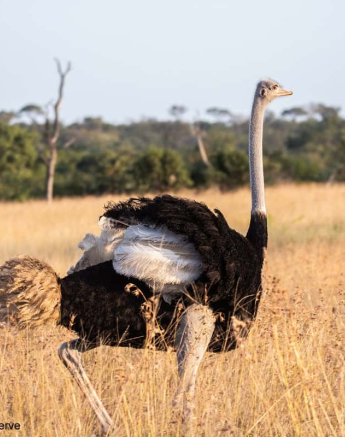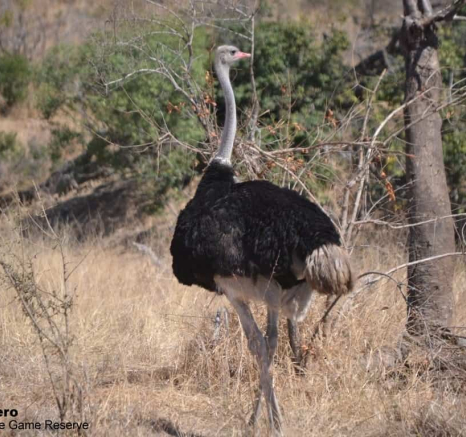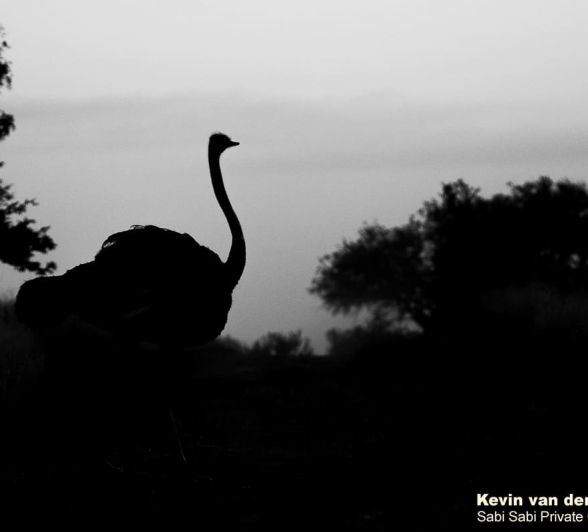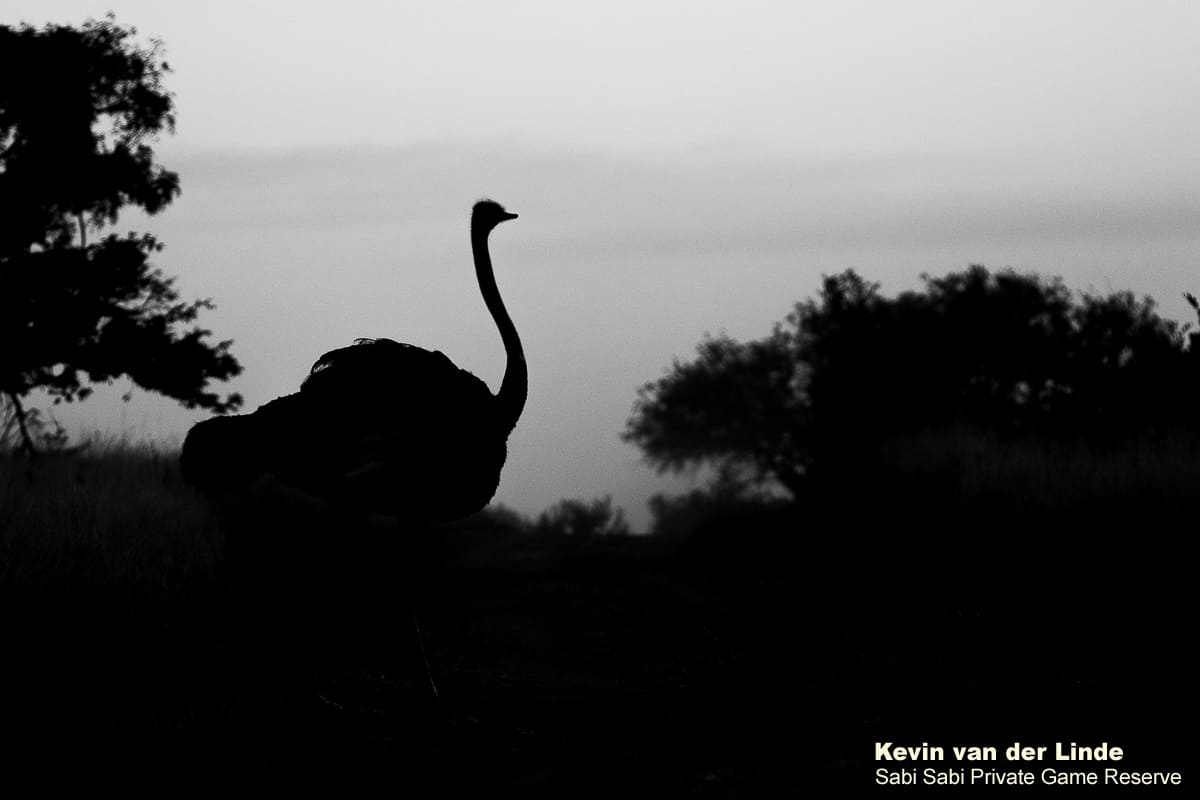Common Ostrich
on Nov 15, 2019Species name: Common Ostrich
Scientific name: Struthio camelus
Weight: 60-80kgs
Shoulder height: 1.2-2m
General habitat: Dry hot savannas and woodlands
Diet: Omnivorous - eating mostly plant material (leaves, roots, seeds, bulbs etc.) but will also occasionally eat insects and reptiles if conditions are harsh.
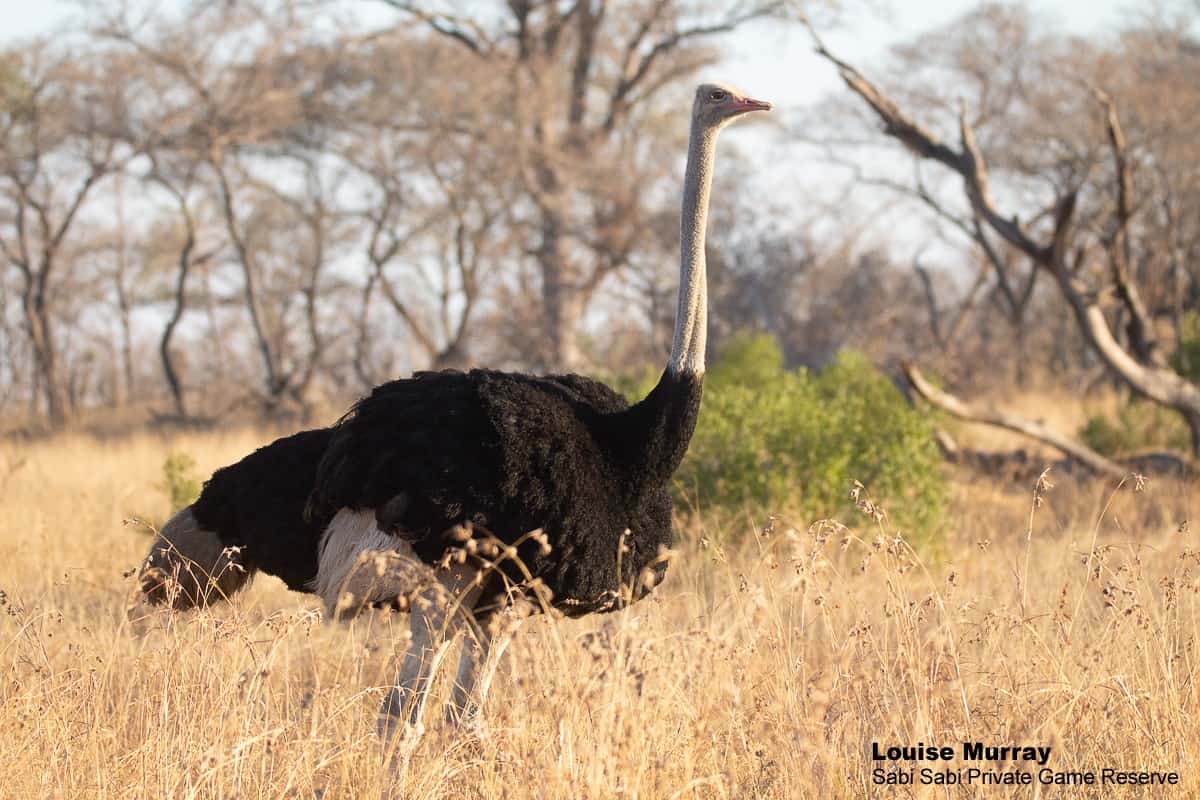
You have to admit that seeing the largest flightless bird in the world is a pretty awesome experience. We don’t often get to see these fascinating birds, but on occasion we can find a few together, mainly consisting of one male and many females as the male ostrich is polygynous. Lone males will pass through the reserve during breeding season. You can tell the difference by looking at the colour of their plumage - males being much darker than females. Males will have pink legs, face and neck during breeding season to attract a female, as well as an elaborate courtship display by fanning their feathers, kneeling on the ground and swaying from side to side.
Once females are ready to lay their eggs, they can all decide to lay them in one nest (a scrapping on the ground) where the most dominate female will place her eggs in the middle to ensure incubation. The male and female will both take turns incubating and cooperative breeding is practised - meaning all members will assist in rearing the chicks, who will rely on the adults for ± 9 months.
Ostriches are unable to fly due to the fact that they lack a keeled sternum with a bony ridge. Other birds have a large keel to which the flight muscles are attached. Their feathers also lack barbules and barbicels (keeps feathers firm) and are useless for flight. However, these big birds can run extremely fast, clocking ± 60-70km/h with a stride about 3-5 meters, as well as having an incredibly powerful kick and strong claw on it which can do some damage! When threatened, ostriches will use these long legs to run, kick or they will decide to lay low to the ground, even placing their head and neck low which will aid in camouflage.
Ostriches get most of the water they need through their diet of vegetation and some insects and as a result, they do not need to drink water on a daily basis; but will drink if water is readily available. Lacking teeth, the ostrich will eat sand and pebbles to help grind their food and help with digestion.
Fun fact – ostriches have the biggest eyes out of any land animal.
My Memorable Sighting
It has to be the first time I saw an ostrich in the wild! I only say this is memorable because he was so beautiful! It must have been breeding season because he was all pink and vibrant with colours; he was so relaxed around the vehicle. My excitement fed onto my guests and we spent some good time with him, just admiring this odd but beautiful bird.
Photo Content
